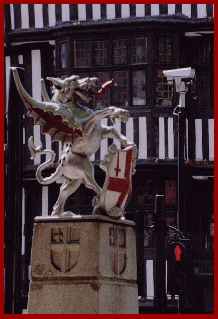| ||||||||||||||||||||||||||||||
Welcome to the | ||||||||||||||||||||||||||||||
 | ||||||||||||||||||||||||||||||
 | ||||||||||||||||||||||||||||||
Time Lapse, VCR's, DVR's, NVR's ... | ||||||||||||||||||||||||||||||
Use a good quality tape, treat the machine with absolute respect, and it should pay dividends in the long run. If VHS quality is inadequate you could always look at Super VHS. With all outward signs and functions being virtually identical to its less refined sibling, the difference in quality (and indeed cost) is quite marked. Whereas a really good VHS machine can only resolve a maximum of 250 lines, modern S-VHS recorders are rated up to 430 lines of resolution in colour. Again only the very best S-VHS tapes (SE-180) must be used, but the image quality will speak for itself. Apart from the different requirements for tape stock (incidentally S-VHS tapes can be used in standard VHS machines, but not the other way around), the overall functions of the machines are very similar. With variable settings for record speed, alarm inputs, time and date generation built in, a myriad of differant playback options (including still, and frame by frame ‘inching’ using 'jog' & 'shuttle'), and picture search, the units are very much interchangeable. A very limited number of recorders will allow operation directly from a 12v DC battery source, which apart from field deployment and covert applications, also allows near effortless battery back up, for mission critical recordings (unfortunately, hardly any multiplexers offer this low voltage option, so manufacturers ..... perhaps you could please be persuaded to think more carefully about what your customers require from this equipment!). One almost totally useless feature of S-VHS machines, is a seperated Y/C video input, which allows the raw Black & White and Colour components of the video signal, to be pumped straight into the machine without additional (and signal degrading) processing associated with the normal composite (CVBS) input. Unfortunately, because these seperated Y/C signals won’t travel much further than a snail with sunstroke, they are hardly if ever used for recording, although connection to a high resolution playback monitor located within a few metres, may offer some limited improvements in picture quality. Whatever the format, video cassettes are by modern standards, increasingly being regarded by some as bulky, and an irritation. Doktor Jon would have to say that given the choice for most applications, a well indexed, and correctly logged collection of cassette recordings, stored for at least fourteen days (30 days preferable), will fit ‘the Bill’ most times. Remember that video tape does wear with use, in particular, ‘oxide’ will shed more readily from the backing material in cheap cassettes. Use the tapes carefully and be sure to replace them at regular intervals. | ||||||||||||||||||||||||||||||
 | ||||||||||||||||||||||||||||||
IMPORTANT: No material may be reproduced, copied or redistributed from this site, © doktorjon.co.uk 2004 - 2008 Homepage...:...Gateway...:...Technical Gateway....:....Quickfind Index....:....Equipment Directory | ||||||||||||||||||||||||||||||

